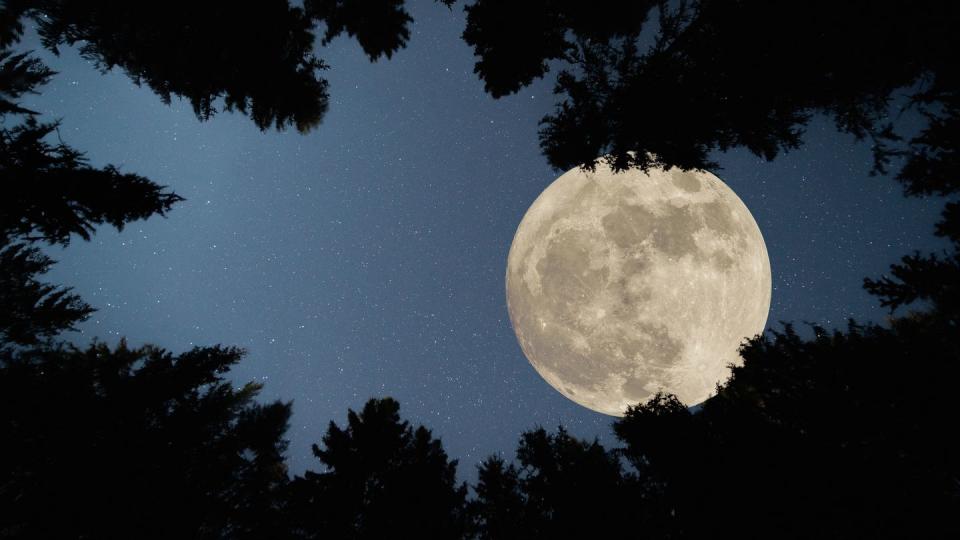See a Rare Super Blue Moon, Co-Starring Saturn, This Wednesday

The saying "once in a blue moon" means something that rarely happens. As it turns out, a blue moon, meaning the second full moon in one month, is not extremely rare and is not blue. But even so, our next full moon, which is the "super blue moon" on Wednesday, August 30, is something to write home about. Here's everything to know about this lunar event, including how to spot Saturn while you're out moon gazing.
It's the biggest supermoon of the year.
"Supermoon"has been a buzzword this summer—our last two full moons have been supermoons and September's Harvest Moon will be one too. The term simply means a new or full moon within 90 percent of its closest point to Earth in its orbit. The super blue moon on August 30 will be the closest of them all at only 222,043 miles away, according to The Old Farmer's Almanac, versus the average 238,855 miles.
The difference in a supermoon's apparent size and brightness is hard to detect visually, but it can amplify the moon illusion, says Space.com—that is, when the moon looks bigger because it appears close to the horizon, trees, or a building.
A supermoon can also intensify the extreme low tides and high tides that occur during full and new moons—so if you're on the coast, beware.

There won't be another "super blue moon" till 2032.
With a lunar cycle of 29.5 days, we're bound to have two full moons in one month (aka, a blue moon) every so often—one usually occurs every two or three years. And full supermoons usually occur three to four times a year, making them pretty common. However, a moon that is both blue and super is a good bit rarer. That last one occurred in December 2009, and the next one will happen in August 2032, according to Time and Date.
You can see Saturn!
Saturn reached opposition (meaning it was aligned with the sun and Earth, with our planet in the middle) on August 27. And, of course, the moon is also in opposition with the sun whenever it's full. The result: When you look up at the full moon on August 30, Saturn will appear close by like a bright, untwinkling "star." To find it, look about five and a half degrees to the upper right of the moon, says Space.com. If you have high-powered binoculars, you can even see Saturn's rings!
No, the moon will not actually be blue.
The "blue moon" on August 3o is called so not because of its color but because it's the second full moon in a month, which happens every two to three years.
The moon can appear blue when there are particles in the air that are of the right size (one micron wide) to filter out red light, says NASA. It takes a volcanic event, such as the 1883 eruption of Indonesia’s Krakatoa or the 1983 eruption of El Chichon in Mexico, to create the right conditions, though wildfires have been known to cause blue-hued moon sightings too.
The term "blue moon" dates back to 16th-century and originally meant an absurdity, similar to the saying "when pigs fly," according to Grammarist. Later, it came to mean the third full moon in a season with four full moons, versus the usual three. The most popular definition, meaning a second full moon in one month, only arose in 1940s and, reportedly, became widespread in the 1980s when it was used in the game Trivial Pursuit.

When to view Wednesday's super blue moon
The full moon peaks on 9:36 PM ET on Wednesday, August 30, 2023, but generally looks full a day before and the day after. Check your local moonrise and set times for the best viewing time where you live.
The best song for your super blue moon soundtrack
"Blue Moon," of course. Many greats, including Elvis Presley, Frank Sinatra, Billie Holiday, and Ella Fitzgerald, have recorded this classic song written Richard Rodgers and Lorenz Hart in 1934. Once of our favorites: the 1961 hit version by The Marcels.
You Might Also Like

